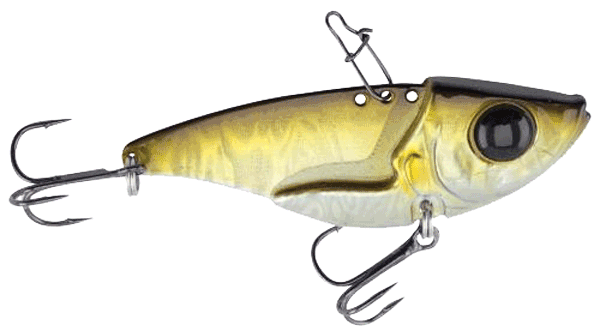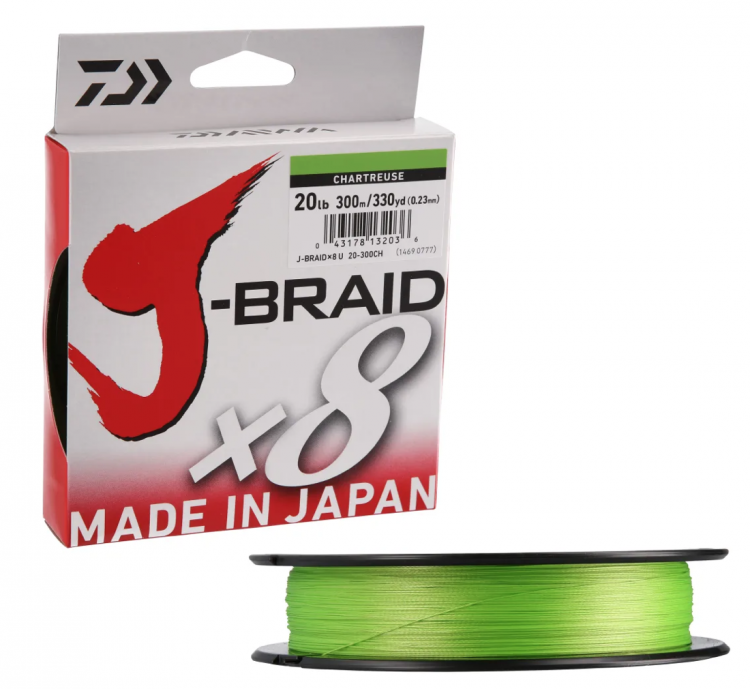Porgies as a Gamefish
Looking at scup from a sportfishing perspective reveals them to be a fun ultralight-tackle target.
One morning, I was drifting a channel edge for fluke and saw a pod of peanut bunker along the drop-off. They were balled up and being pushed around by a fish I couldn’t see. I flipped out a small vibe, let it sink below the school, and got bitten instantly. A minute later, I had a full-size scup at the side of my kayak. A few more casts yielded the same result. I have to admit that it took me a while to appreciate how fun porgies (scup) can be to catch. They are one of the most abundant fish from New York to Massachusetts, they’re easy to catch, and they eat a variety of baits; however, when you ask a New Englander to name a favorite fish to catch, scup are rarely even in the top 10.
(Note: On The Water is reader-supported. When you buy through links on our site, we may earn an affiliate commission.)
It took me a long time to come around to seeing the scup’s potential as a sport fish. Maybe it was because I always saw the fill-the-cooler crowd catching them two at a time on bait rigs, or maybe it was because there were so many small ones around, but at some point, I started to change my mind.
My introduction to scup was as a bycatch while targeting black sea bass, fluke, and stripers—they also saved the day more than once when the albies forgot to show. Small plastics and metal jigs intended for other species always produce good numbers of scup, so I never really thought about trying lures specifically for them.
My attitude about scup completely changed after winning an entry into the Hobie Kayak Fishing Worlds by participating in the On The Water Striper Cup. The Hobie event was held in Australia, and the target fish was bream, a fish very much like our scup. After seeing the enthusiasm that Aussies had for bream and the tactics they used, I realized that scup could be a really fun fish to specifically chase. The bream in Australia are much more difficult to get to eat than our scup, but bream fishing has a tournament trail similar to the largemouth bass fishery in the U.S. When I got back home, I couldn’t help but think I could have much more fun with scup by figuring out innovative ways to fish for them.

I pondered how I could apply my panfishing skills to scup. They aren’t that different from crappies and white perch, so what if I tried the same tactics that I use for my favorite panfish? I brought a light rod and an array of small jigs, both plastics and metals, and, not surprisingly, everything worked. But everything didn’t work equally well!
Scup fishing takes place in much more challenging conditions than freshwater panfish: open water, current, and wind are the norm. If you fish light tackle, you know that wind and current are the enemies of finesse presentations, so the most versatile lures combine attraction and enough weight to stay low in the water column.
Scup are not picky eaters. They feed on small crustaceans, mollusks, fish, just about anything they can find. They also have teeth and are capable of crunching through the hard shells of crabs and mollusks. Most of their feeding is done near the bottom, though they prefer hanging over sandy bottom adjacent to rocks and reefs.
Lures and Tackle for Scup Sportfishing
After trying just about every panfish lure I own for scup, I settled on vibes and blade baits as my favorites. A vibe is a lipless crankbait that creates a strong vibration when worked with a sweeping jigging motion, and is typically plastic and slower sinking. Vibes are great for shallow water that’s less than 15 feet. Blade baits are weighted metal baits that produce a similar vibrating action as the vibes, but the advantage of blade baits is that they are heavier for their size and get to the bottom quickly, especially when fishing in 20 feet or more.

My favorite vibe baits are the Rapala Rippin’ Rap and Storm Arashi Vibe in a half ounce or less. For the blade baits, my go-to is Cabela’s Mean Eye Blade Bait or the Damiki Vault Blade bait in 3/8 ounce or lighter. Scup are focused on small prey, so smaller sizes generally work best.
One of the challenges when using these small freshwater baits in the salt is that the hooks don’t last long. I bring a few lures and always carry extra hooks to change out when necessary. Scup have crushing teeth and do a number on small treble hooks; having a pair of forceps makes hook removal easier and the forceps are much less likely to break a hook than pliers. You can also rig the lures with single hooks—it is always worth experimenting with different hook styles.
Vibes come in an amazing array of patterns and colors, but don’t get too caught up in color selection. I tend to pick bright colors, but I have to say that I’ve never noticed a time where one color out-fished the others.




Vibes and blade baits work best in areas with fewer snags, such as sandy or cobblestone bottoms. Spots with thick weeds or rocks are better worked with small plastics that won’t snag as often. Fortunately, the key areas for scup are adjacent to rather than within the structure you’re fishing. This makes sense since predators like stripers and big black sea bass prefer rocky areas, making the open waters around them a safety zone for scup. Sandy points and drop-offs are great places to search for schools of scup, especially along beaches that are loaded with small baitfish.
Schools of scup are easy to locate with a good fishfinder. I use a Humminbird Helix with Mega Side Imaging, and by combining the side-scanning and sonar screens, I can look below and around me all at once. Schools tend to be large and scattered over structure. Scup are roaming fish, always on the move looking for food, so finding an area with fish and then drifting it is a good plan of attack.
When fishing vibe-style baits, short casts will foul less frequently, and when fishing light tackle, short casts give you better lure control. I count my lure down to the bottom, then on subsequent casts, I start swimming it just before I hit bottom. A vibe is best fished with a yo-yo style, pulling it up and causing it to vibrate, then letting it slide back down in the water column. Sometimes, picky fish can be coaxed into eating by pounding the bait on the bottom and stirring up sand. In deeper water, vertical jigging is very effective—just make sure you keep a tight line on the lure because most of the hits come as it sinks back to the bottom.
Scup have tough mouths and often come off the hook. One of the benefits of a vibe is that that it has two sets of trebles, which make it harder for the fish to shake free. Light-wire, extra-sharp trebles are key, and while light hooks are more likely to bend, a light rod will keep the fish on the line and the hooks from bending.
Scup fishing is very similar to fishing for panfish in fresh water, except that they fight much harder and the bycatch can be much larger. I once made the mistake of bringing my light crappie rod with me on a trip, and while the scup put up quite a battle, there were also some 20-inch black sea bass mixed in and each one took longer than it should have to land. You will catch everything that swims mixed in with scup. In addition to frequent black sea bass, I’ve caught fluke, tog, blues, stripers, and even Spanish mackerel.

Your rod choice is important. If you use a stiff rod with small lures, you will rip the hooks out frequently. A light, moderate-action rod will act as a shock absorber and keep the fish on. However, there is a trade-off in rod choice between the shock absorber action of a moderate rod and the sensitivity of a fast-action rod. As you work a vibe, the rod will pick up the vibrations of the lure so you will always know when the lure is working properly and when it is fouled.
My favorite rod is a custom Mudhole MHX dropshot rod rated for 4- to 8-pound-test line. The rod has great feel and enough power for the incidental catches of much larger fish. Use a rod that has the sensitivity for little jigs and the power to land the occasional slot striper that eats your vibe.
My reel choice is a Shimano Stradic 1000 spooled with either 6- or 8-pound-test Daiwa J-Braid X8, with a 6- to 8-pound-test monofilament leader. A smooth reel with a good drag is necessary, as scup can be quite scrappy and there are often good-sized black sea bass among them. An 8-carrier braid is very smooth and great for finesse fishing, and 6-pound-test lines are very thin and provide amazing sensitivity.

-
Article: How to Choose a Braided Line
The Porgy Gamefish Gameplan
One of the things I love about scup is that they are not a “time of day” fish. You can spend the prime morning hours chasing fish like stripers or albies, then hit some scup spots before heading in at the end of the day. Even though I love fishing for scup, I don’t make specific trips for them. Instead, I note schools that I see while I’m looking for other fish, then hit them later in the day.

Scup typically school up by size, and you will notice that certain areas hold larger fish. There are times when the bottom is paved with tiny scup, so when you find those spots, you are better off moving to a different place. I usually look for the nearest drop-off because when I find small fish, larger ones are usually nearby but in deeper water. There are also times when the black sea bass won’t let you get your vibe past them. If I’ve had my fill of sea bass, I move to a nearby area with sandy bottom, where the ratio of scup to black sea bass usually goes way up.
Scup are a popular food fish, but I’m not a big fan of it when cooked. Quite a few friends told me that I needed to try scup raw—and it took me years to finally do so. Once I tried it, though, it became a family staple, so now I can’t go scup fishing without keeping a few. The nice thing about eating it raw is that you don’t have to keep and clean very many fish. A few 12- to 14-inch fish will provide enough to make some high-quality sashimi.
Scup are one of the most overlooked fish in New England because most people aren’t fishing them the fun way. You can certainly get some sea worms and catch them two at a time, but why not break out the light rod and cull out the larger fish from the school with your favorite blade bait? Scup bite fast, pull hard, and will help recapture that same joy you got from fishing for sunfish when you were 10.
Related Content
1 thought on “Porgies as a Gamefish”
-
leo maz using a treble hook on fish you don’t intend to process as food is a waste . Not something to brag about
Leave a Reply